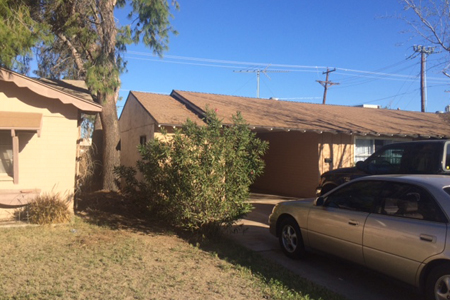https://old.rosieonthehouse.com/faqs/what-do-i-need-to-know-before-i-convert-my-carport-to-a-garage
What do I need to know before I convert my carport to a garage?
Converting a carport to an enclosed garage involves more than throwing up a couple of walls and hanging a garage door. In fact, if that’s all you do, you’ll be creating two problems for yourself: a code violation and a potential fire trap.
Here are several things to consider before you make the switch from open carport to enclosed garage:
- Get a building permit from your city, and follow all local zoning rules. In rare cases, the city won’t allow you to enclose your carport if it’s too close to the property line.
- If your neighborhood is part of a homeowners’ association, get permission for the project before you start it. I’ve seen too many heartbroken—and angry—do-it-yourselfers tearing down walls that violate HOA rules. When it comes to HOAs, it’s easier to get permission than forgiveness.
- Make a plan. Decide how you want the garage to look and what materials it will be made from. Decide where the walk-through door will be and if you want a window. What kind of roof will it have? What touches will you include so it complements the look of the house? You might have to show a to-scale diagram to city officials before they’ll give you a “residential construction” permit.
- Get help. If you’re ultra-handy, a carport conversion might be a do-it-yourself job. Still, it’s easy to find a remodeling contractor who is familiar with codes and knows how to do the project right. Consider the kinds of work you might need someone to do: add lights and electricity for the automatic garage door; pour concrete; build a wood frame; hang drywall; paint; and install the garage door. You might want to consult with an architect to design the structure and advise you about materials.
- Use masonry instead of wood, at least for the bottom six or eight inches of the new walls you build. If your carport butts up against the kitchen, you’ll have to build a long wall on the opposite side of the new garage. If you build with wood and if the drainage around the carport isn’t great, the new wall will invite puddles to form around its base. That leaves the wood prone to wood rot and termites. Choose a material that’s resistant.
- Comply with fire safety regulations. If your new garage shares a wall with your house, or if there’s a living space above the garage—you’ll need to build a buffer between them in the form of a one-hour fire-rated wall or ceiling. The door between the house and the garage has to be spring-loaded so it closes automatically—and the material it’s made from has to be fire-rated as well. In addition, if you have a kitchen window looking onto your carport, you’ll have to get rid of it when you enclose the new garage. You’ll find all of the fire safety regulations in your city’s building code.
- Insulate the garage. You don’t have to, but it will be 100 degrees in there all summer if you don’t. Choose an energy-efficient, insulated garage door with a safety sensor that prevents it from closing if anything—or anyone—is in its path.
Unlike an open carport, an enclosed garage offers more protection from the sun, wind and rain, and it gives you a private, lockable space to store tools and lawn equipment. If you wall yours in right, it can make your house look and feel bigger.
###
RELATED CONTENT:
- Visit our DIY How-To-Videos: Rosie's Three-Minute Tips
- Latest Carport Design Trends
- Podcast: 5 DIY Potholes to Avoid
